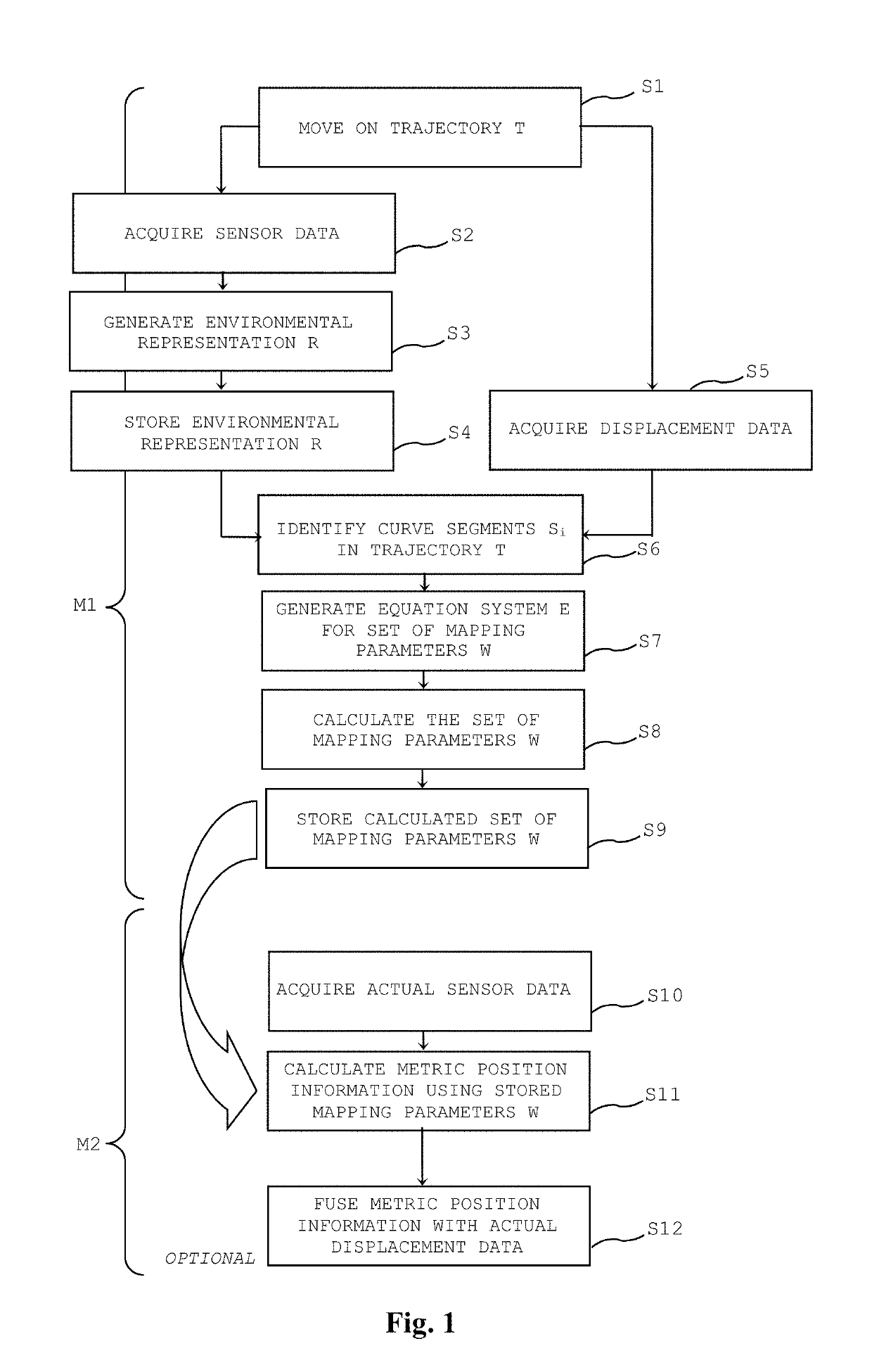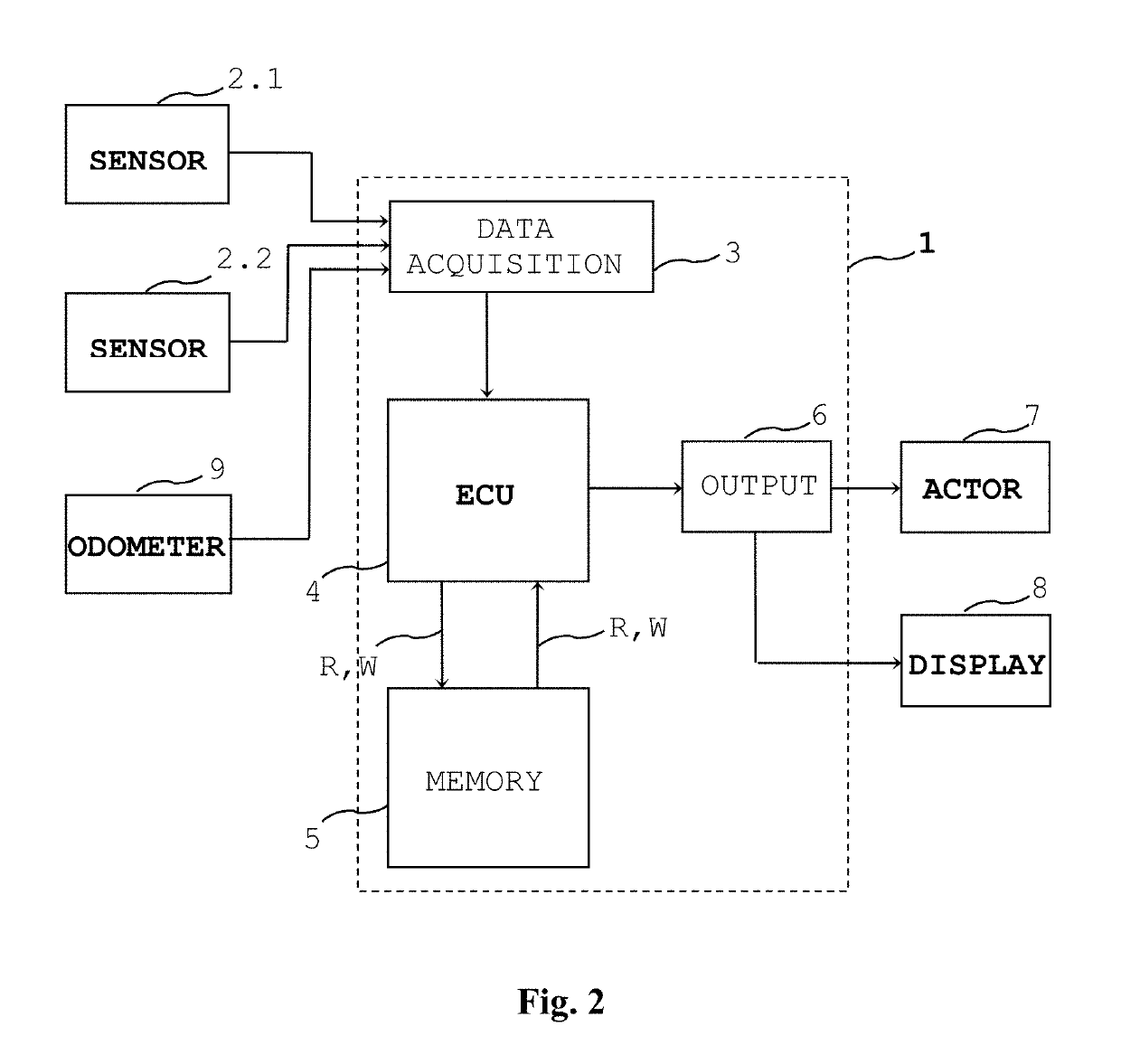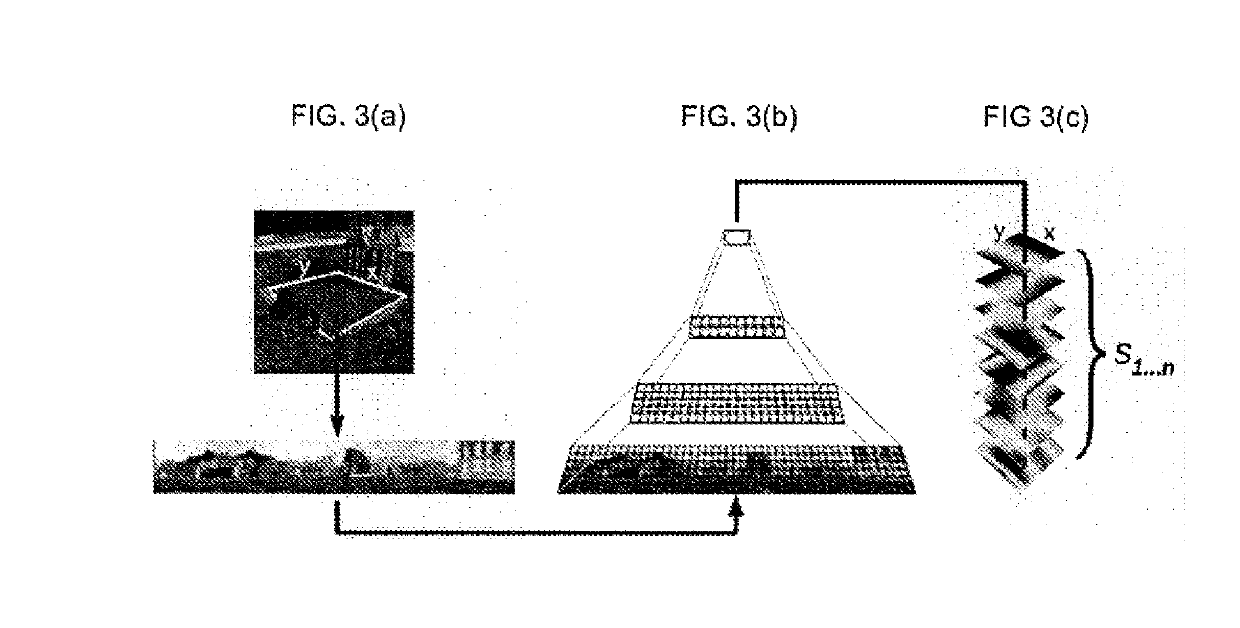Unsupervised learning of metric representations from slow features
- Summary
- Abstract
- Description
- Claims
- Application Information
AI Technical Summary
Benefits of technology
Problems solved by technology
Method used
Image
Examples
Embodiment Construction
[0069]The term odometry is used for methods using integration the mobile device's displacement measurements, for example from wheel turns or an IMU. The term is used for displacement sensors or odometer systems (sensors) as well as for integrated displacement measurements which provide displacement data.
[0070]In FIG. 1 a flowchart of a self-localization method for a mobile device according to an embodiment is shown. For the structural units and modules of the localization system reference to FIG. 2 and reference numbers in FIG. 2 is made.
[0071]Generally a navigation method for a mobile device comprises two distinct phases: In a (first) learning (training) phase M1 environmental representations R are learned. In a (second) application phase M2, a navigation task is performed based on the learned environmental representations R.
[0072]A navigation task can include navigating the mobile device from a starting point to a target point in a working area (working environment).
[0073]The indi...
PUM
 Login to View More
Login to View More Abstract
Description
Claims
Application Information
 Login to View More
Login to View More - R&D
- Intellectual Property
- Life Sciences
- Materials
- Tech Scout
- Unparalleled Data Quality
- Higher Quality Content
- 60% Fewer Hallucinations
Browse by: Latest US Patents, China's latest patents, Technical Efficacy Thesaurus, Application Domain, Technology Topic, Popular Technical Reports.
© 2025 PatSnap. All rights reserved.Legal|Privacy policy|Modern Slavery Act Transparency Statement|Sitemap|About US| Contact US: help@patsnap.com



